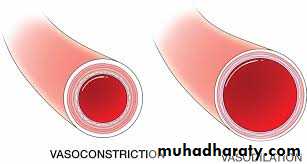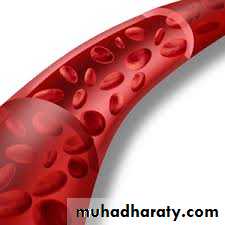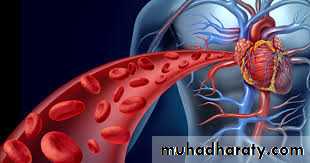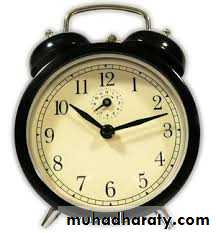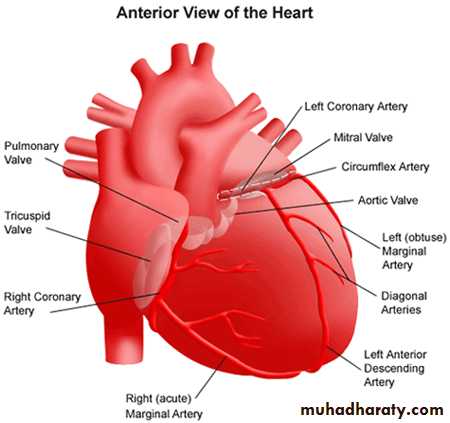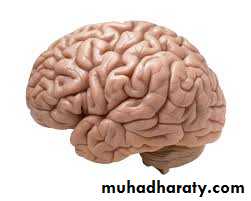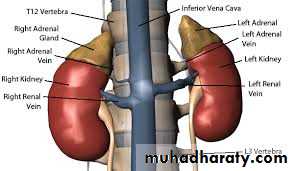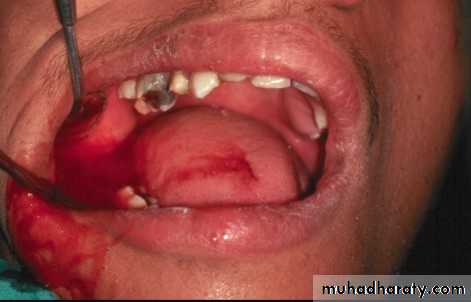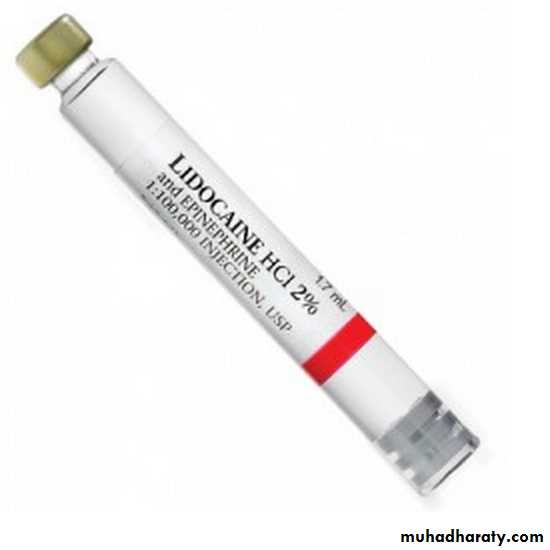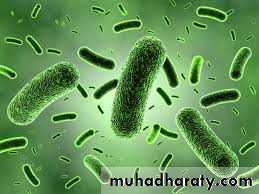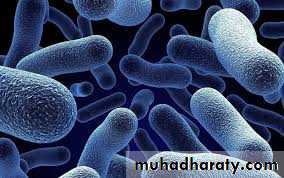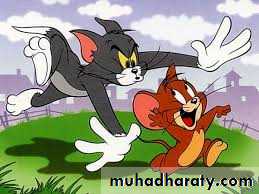Oral Surgery
Local AnesthesiaVasoconstrictor are drugs or chemical agents that constrict blood vessels thereby control tissue perfusion , They are added to local anesthetic solutions to oppose the vasodilatation actions of local anesthetics . all injectable local anesthetics posses some degree of vasodilating activity . The degree of vasodilatation varies from one type to another and may vary according to the site of injection and individual patient response .
After local anesthetics injection into tissue , blood vessel dilate in the area , resulting in an increased blood flow to the site . this increase in perfusion leads to the following reactions :
1. Increased rate of absorption of the local anesthetic agent into the cardiovascular system , which in turn removes if from the injection site .
2. Increased plasma level of the local anesthetic agent, which an increased risk of local anesthetic toxicity .
3. Decrease duration of action and decrease depth of anesthesia because it diffuses away from the injection sites more rapidly .
4. Increased bleeding at the site of injection due to increased perfusion .
The advantages of additions of vasoconstrictors to local anesthetic solution are :
A- By vasoconsrticting blood vessel , vasoconstrictors decrease blood flow (perfusion) to the site of the injection .B- Absorption of the local anesthetics agent into the cardiovascular system is slowed , resulting in lower anesthetic blood levels .
C- The lower local anesthetic blood levels decrease the risk of local anesthetic toxicity .
1
2
3
D- Higher volumes of the local anesthetic agent remain in and around the nerve for longer periods thereby nicreasing the duration of action of local anesthetics .
E- Vasoconstrictor decrease bleeding in the site of injection and are useful when increased bleeding is anticipated (ex: during a surgical procedure) .
Bleeding
Classification of vasoconstrictorThese drugs can be classified on the basis of mode of action , into the following three categories :
1- Direct acting drugs : these drugs stimulate or exert their action directly on the adrenergic receptors , for example epinephrine , nor epinephrine , levonordefrine .
2- Indirect acting drugs : these drugs act by releasing nor epinephrine from the adrenergic nerve terminals , for example tyramine amphetamine .
3- Mixed acting drugs : these drugs have both direct and in direct actions , for example ephedrine .
All vasoconstrictors used in conjunction with local anesthetic are direct acting agents .
Dilution of vasoconstrictor
The dilution of vasoconstrictor is commonly referred to as ratio (1 to 1000, and is written as 1:1000) . this 1:1000 mean that there is l gm (1000mg ) of the drug contained in 1000ml of solution .Type of the vasoconstrictors :
a- Epinephrine (adrenaline) :Epinephrine remains the most effective and the most commonly used vasoconstrictor in medicine and dentistry .
source : it is secreted primary by adrenal medulla . it is available as synthetic and is also obtained from adrenal medulla of animals .
Mode of action : it acts directly on both alpha and beta adrenergic receptors .
Systemic action :
1- Cardiovascular systemIt causes increased systolic and diastolic blood pressure , increased heart rate and strength of contraction , increased stroke volume and cardiac output , and it causes increased myocardial oxygen consumption
On blood vessel it cause vasoconstriction and so frequently used a lone as a vasoconstrictor for hemostasis during surgical procedures .
2- Respiratory system
Adrenaline us a potent dilator of the smooth muscle of the bronchiole , so it the drug of choice for management of acute asthma .3- Central nervous system
In the usual therapeutic dosage adrenaline is not a potent CNS stimulant , CNS stimulant occurs when an excessive dosage is given .
Availability in dentistry
Adrenaline is the most potent and widely used vasoconstrictor in dentistry . it is in 1:50 000 , 1:80 000 , 1: 100 000 , 1:200 000 dilutionMaximum dosage
This drug is potent , and can produce undesirable results .
a- If used in large volumes
b- If inadvertently injected intravascularly
So these drugs should be used with consideration to their benefits and risk .
The maximum doses are recommended by new york heart association , and suggested by Bennette (1983) and Malamed (1977) are as follows :
a- For normal healthy adult patient the maximum recommended dose is (0.2 mg) per appointment that means
10 ml of 1:50 000 dilution ( 5 cartridge ).
16 ml of 1:80 000 dilution ( 8 cartridge ).
20 ml of 1:100 000 dilution ( 10 cartridge ).
40 ml of 1:200 000 dilution ( 20 cartridge ).
b- For patient with clinically significant cardiovascular disease
The max dose is 0.40 mg per appointment that means2 ml of 1:50 000 dilution ( 1 cartridge ).
3.2 ml of 1:80 000 dilution ( 1.6 cartridge ).
4 ml of 1:100 000 dilution ( 2 cartridge ).
8 ml of 1:200 000 dilution ( 4 cartridge ).
b-nor epinephrine (nor adrenaline)
source : either synthetic or obtained from adrenal medulla of animals .mode of action : it act almost exclusively on alpha receptors . it also stimulate beta receptors in the heart , it has one fourth of adrenaline potency .
Systemic action
1- On cardiovascular systemIt causes increased systolic blood pressure , decreased heart rate , slightly decrease in cardiac output , increased stroke volume .
On the blood vessel it cause vasoconstriction .
2- On respiratory system
It does not relax smooth muscle as do adrenaline and it is not clinically effective in management of bronchospasm .
3-on CNS
In the usual therapeutic dose nor epinephrine is not potent CNS stimulant .
Availability in dentistry :
Nor epinephrine is used with local anesthesia as vasoconstrictor in a 1:300 000 dilution .Maximum recommended does :
For normal healthy adult patient the maximum recommended dose is 0.34 mg per appointment , that mean 10 ml of a 1:300 000
For patient with clinically significant cardiovascular disease 0.14 g per appointment , that mean 4 ml of a 1:300 000
C-Levonordefrine
it is synthetic substance , it act through direct alpha receptor stimulation with some beta activity, it produces less cardiac and CNS stimulation than epinephrine dose it is mainly used with mepivacaine a 1:20 000 dilution .the maximum dose for all patient should be 1 mg per appointment that mean 20 ml of a 1:20 000 dilution (11 cartridge)
D- Felypressine
Source : it is synthetic analogue of the anti diuretic hormone ( vasopressin) . it is non sympathomimetics drug and categorized as vasoconstrictor .
Mode of action : it act as direct simulant of vascular smooth muscle .
Systemic action :
Heart : no direct effect .
Blood vessel : in high doses felypressine –induced constriction of the cutaneous blood vessel .
CNS: no effect .
Uterus : it has oxytocic action so it is contraindicated for pregnant patients .
Availability in dentistry
It is used in dentistry in a dilution of 0.03 lU/ml 3% prilocaine .Maximum dose is 0.27 lU that`s mean 9 ml of 0.03 lU/ml .
Selection of vasoconstrictor
The Selection of an appropriate vasoconstrictor is based on following factors :1- length of the surgical or dental procedure .
2- requirement for hemostasis during the surgical procedure .
3- requirement for postoperative pain control .
4- Medical or physical status of the patient and if used any medications
1-length of the surgical or dental procedure
The duration of pulpal and hard tissue anesthesia with 2% lidocaine only lasts for 10 min , the addition of adrenaline of 1:50 000 or 1:100 000 dilution prolong the duration to 60 min.Hence for any surgical treatment requiring 40-50 min it is difficult to achieve pulpal anesthesia without using a vasoconstrictor
2- requirement for hemostasis
Some of vasoconstrictor are effective in minimizing the blood loss during the surgical procedure as adrenaline , other as felypressine which is of minimal value in achieving hemostasis .3-requirement for postoperative pain control
Profound pain control of adequate duration by a local anesthetic agent with vasoconstrictor and is likely to produce stress response .4-Medical or physical status of the patient and if used
The benefit and risks of including a vasoconstrictor in a local anesthetic solution in patients who are medically compromised , most be weighed against benefits and risks of using plain anesthesia .For the following group of patients the use of local anesthetic agents with vasoconstrictor is contraindicated :
a- Patients with significant cardiovascular disease such as ischemic heart disease , hypertension , cerebral strokes (CVA) .
b- Patients with certain uncontrolled non-cardiovascular disease such as thyrotoxicosis or hyperthyroid states .
c- Patients receiving monoamine – oxidase inhibitors , tricyclic antidepressant .
Reducing agent
Vasoconstrictor in local anesthetic solution are unstable maybe oxidize especially on prolonged exposure to sunlight and this will lead to brown discoloration of the solution , to overcome this problem a small quantity of antioxidant as sodium bisulphate is added to the cartridge , this substance reacts with Oxygen before Oxygen can destroy the Vasoconstrictor (adrenaline or nor adrenaline ) so it protects their stability .
Preservative
The sterility of local anesthetic solution is maintained by inclusion of small amount of preservative .A number of chemicals are used as general preservatives , these are added to increase the shelf-life , and include :
1- Methylparaben which is bacteriostatic and fungistatic agent .
2- Thymol which is antiseptic , fungistatic .
Fungicide
In the past some solutions tended to become cloudy due to the proliferation of minute fungi , now a small quantity of thymole is added to serve a Fungicide and prevent this occurrence .Sodium chloride (Nacl) or Ringers solution
it is added to content of the cartridge to make the solution isotonic with the tissue of the body this isotonic vehicle minimizes the discomfort during injection of local anesthesia .
Distilled water
It is used as a diluents to provide the volume of solution in the dental cartridge
Thank
Youfor
Listening


